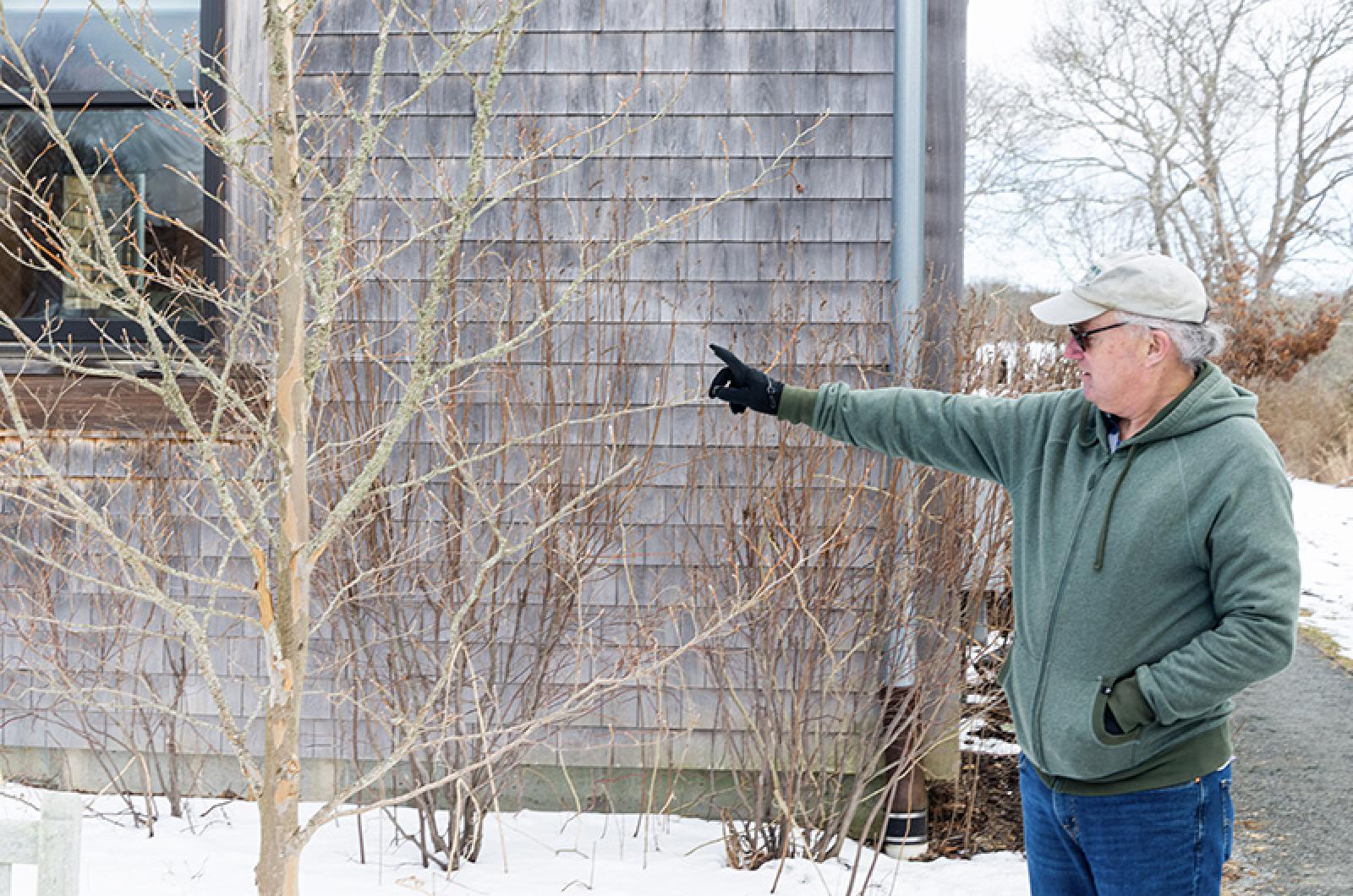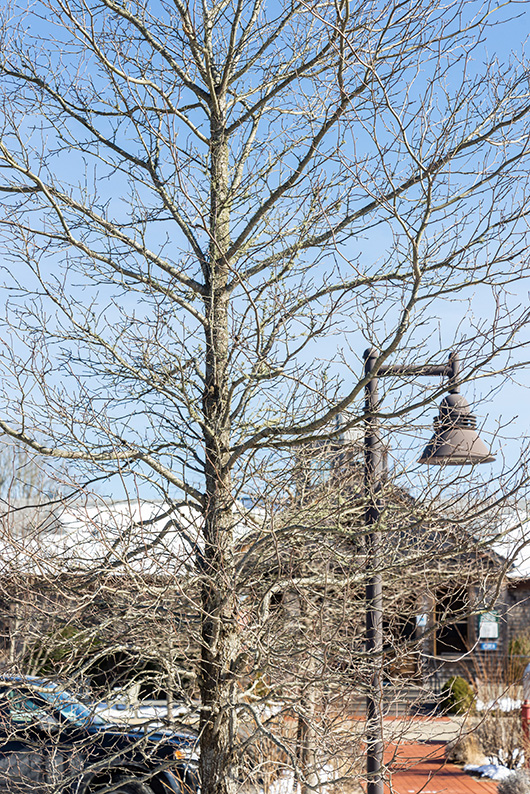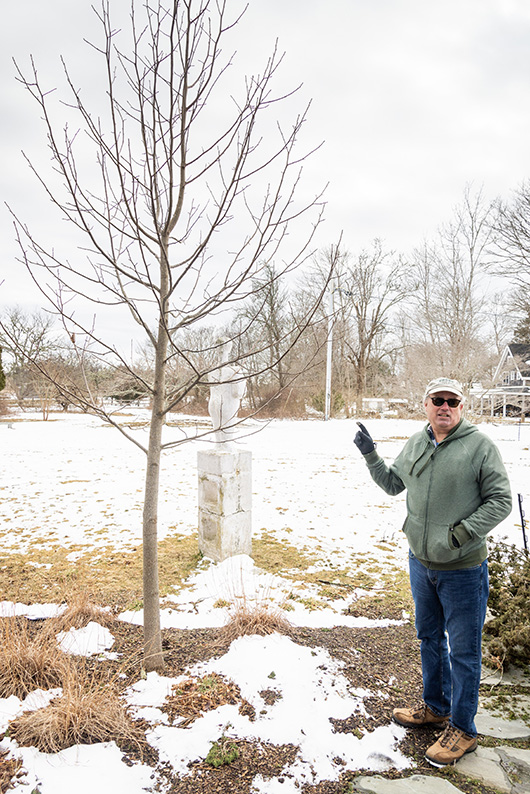The trees of West Tisbury now have their own advisory group, formed by the select board to map existing street trees in the historic town center and plan for future plantings.
“Most of the trees … in the historic district are about 60 years old,” said Polly Hill Arboretum director Tim Boland, who chairs the new tree advisory committee. “The life of street trees in North America is generally less than 15 years.”
The committee will begin its work with a survey of the 230-acre district’s approximately 300 street trees, which Mr. Boland defined as growing within about 12 feet of the road. Polly Hill staff and students will use geographic information system (GIS) technology to create a digital map that includes not only the trees’ locations but the size, condition and estimated life span of each one, he said.
The committee will also work with town tree warden Jeremiah Brown, Mr. Boland said, as well as calling on the expertise of local arborists from Bartlett Tree Experts, who track tree pests and diseases on the Island. The next task will be to plan how the town can sustain and diversify its natural canopy with further plantings as the current trees decline, Mr. Boland said.
“If you don’t have small trees coming on [when older ones fail], you’re really caught in a treeless, hot environment,” he said.
The town needs trees that can handle the changing climate, and there should be at least 10 different varieties planted in order to reduce the risk of species-sweeping pathogens like Dutch elm disease, Mr. Boland said. Originally discovered in China before it was named in the Netherlands, the disease wiped out the stately American elms that once graced the town center, Mr. Boland said, displaying a vintage photo of Alley’s General Store with its porch shaded by two large, long-gone elms.
Many of the stricken elms were replaced by Norway maples, which quickly become invasive, Mr. Boland told the Gazette Wednesday afternoon during a tour of trees outside the town library.
“The tree canopy of West Tisbury is probably at least 50 per cent maples,” he said. “They’re beautiful, and we’re not out to cut them all down,” he added. “We want them to senesce, and when they go away we’ll plant new trees.”
As an example of a declining maple, Mr. Boland pointed out one riddled with cavities that stands hazardously close to the library’s parking area.
“That tree’s going to shatter, and that won’t be good.”
To ensure the healthiest town canopy in future years, Mr. Boland said no tree variety should amount to more than 10 per cent of the total. Disease-resistant American elms are now available, he said, and the town should plant more native trees as well.
“This is our dear old beetlebung,” he said, gesturing affectionately to a tree planted in the library lot.
Bristling with branches, the beetlebung could do with some pruning but otherwise appears in fine health, Mr. Boland said.
The library site, which reopened to the public in 2014 after an extensive redesign, has been an incubator of sorts for the tree advisory concept.
“The idea of it started here,” said Mr. Boland, who was involved in selecting the trees for the property.
A line of sugar maples now stands where unruly Norway maples had crowded between the library parking lot and the Field Gallery lawn, he said. Nearby, a shapely American tulip poplar reaches its limbs skyward while a Polly Hill stewartia provides winter interest with its colorful, peeling bark.
Native oaks, as long as they’re well tended, could also form part of the town’s future canopy, Mr. Boland said.
Looking ahead, he said more and bigger trees could be planted if the town moves to bury its utility wires that are currently carried on poles.
Work on the initial West Tisbury tree survey will begin in earnest once the weather warms and leaves are out, Mr. Boland said.









Comments (1)
Comments
Comment policy »